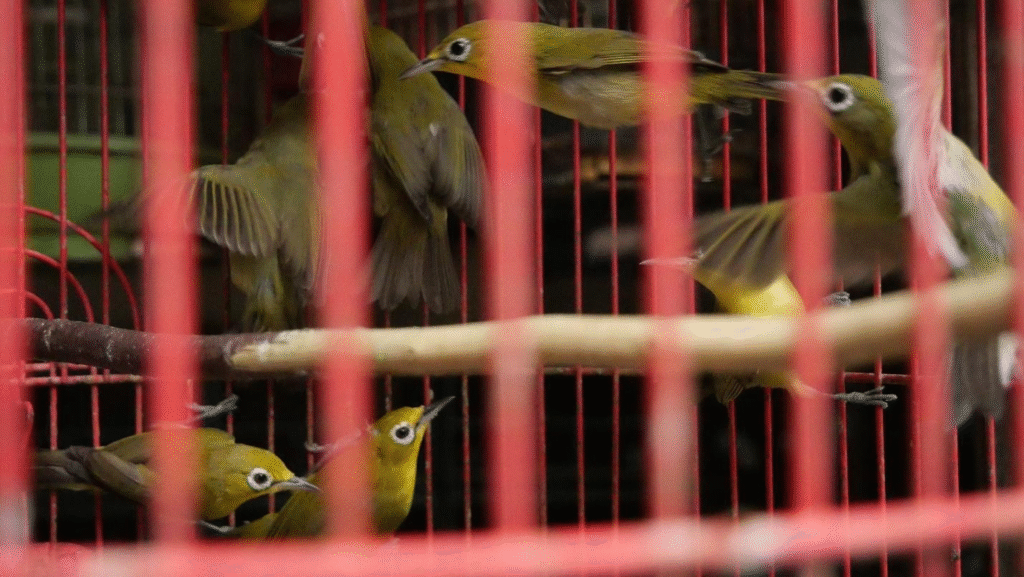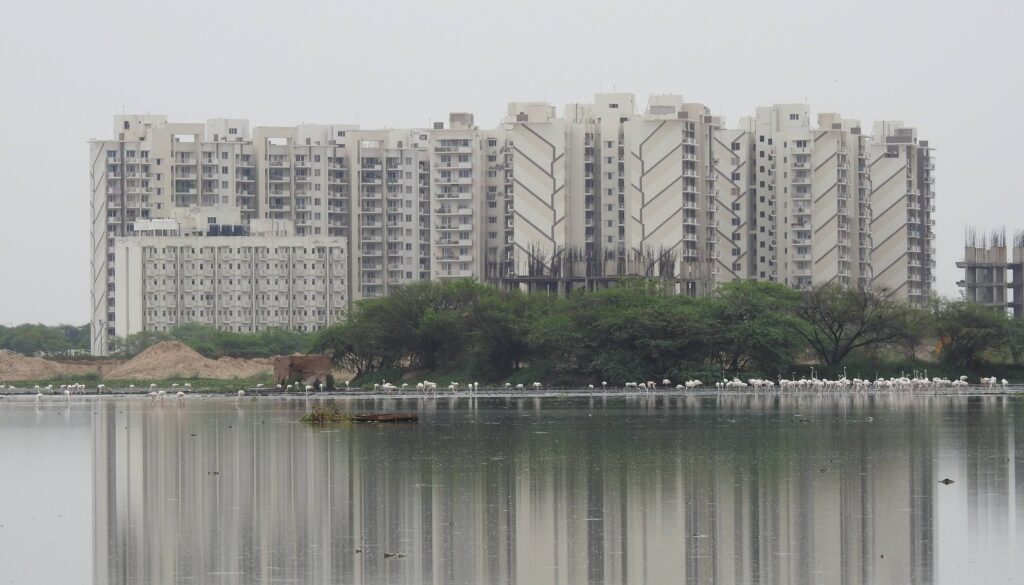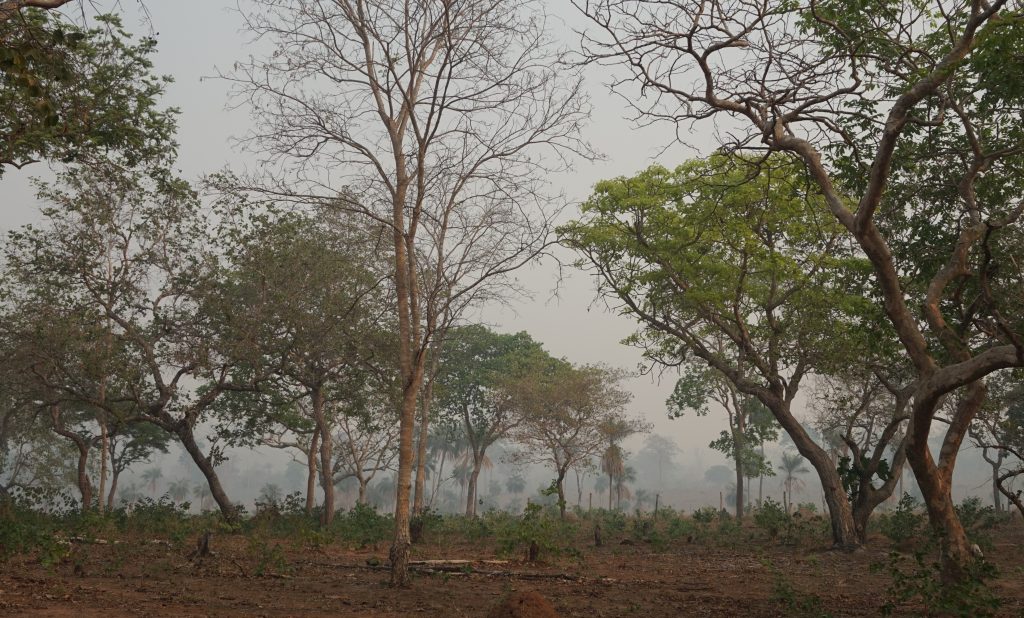Featured photograph by Ch. Pratima
The end of the road to old Podampeta leads to an abandoned house that opens directly onto the ocean—as you cling to the empty door frame. Old Podampeta was once a small fishing village on the eastern coast of India. And this is just one house among three lanes of derelict houses along an eroded stretch of coastline, which have collapsed from strong tidal action and coastal erosion over the past two decades. After 2007, most families in Podampeta were relocated to settlements further inland, one of which is known as New Podampeta.
This dilapidated house on which I’m perched, located in the Ganjam district of Odisha, has the best view. At different times of the day, you can see the setting sun, dungis (traditional fishing boats) dotting the water or fisherfolk going to cast their nets.
During our fieldwork in Ganjam, my colleagues Bhawna, Pratima, Nagamma, Lalita, Gauri, and I often discuss the dynamic shores we walk. Our conversations intertwine personal histories, the changes that seem to be the only constant, and the mental health impacts of a changing climate. These discussions weave threads of hope, loss, grief, and small everyday acts of resistance that we witness in the Noliya caste—a large community that fishes across the open shores of southern Odisha and Andhra Pradesh.
As I look beyond the broken window in this house, I reflect on how mental health and climate change are interconnected in ways that may not be immediately obvious. Both share the same invisible threats—the kind that creeps in without warning and disrupts lives. They also exacerbate social, political, and economic marginalisation, resulting in poverty, unemployment, migration, and hoarding of power by the powerful.
One of the most significant challenges prevailing in both these discourses is their Eurocentric, expert-led ideology that often neglects the nuanced, complex lived realities of the people who are most affected. This approach tends to focus on scientific theories and solutions, sidelining traditional ecological knowledge and everyday experiences. However, our fieldwork revealed how the people of these stories and shores, who live with the daily threat of climate impacts, have their ways of coping and responding.
In our conversations, we asked ourselves how to shift away from this dominant, pathologising, doomsday narrative and focus on the lived experiences of people facing uncertain futures. One expression we heard repeatedly in Ganjam was “Samudram mamalni thinesthundi” (the sea will eat us). Even in the face of this impending crisis, we continue to witness small, quiet acts of persistence, community cohesion, resilience, hope, and adaptation. These actions, although not grand or heroic, can be powerful responses towards the preservation of the ‘self’ in the face of distress, and we bring to you some of the narratives that have made it possible for hope and grief to coexist.
I wish to see the sea every day
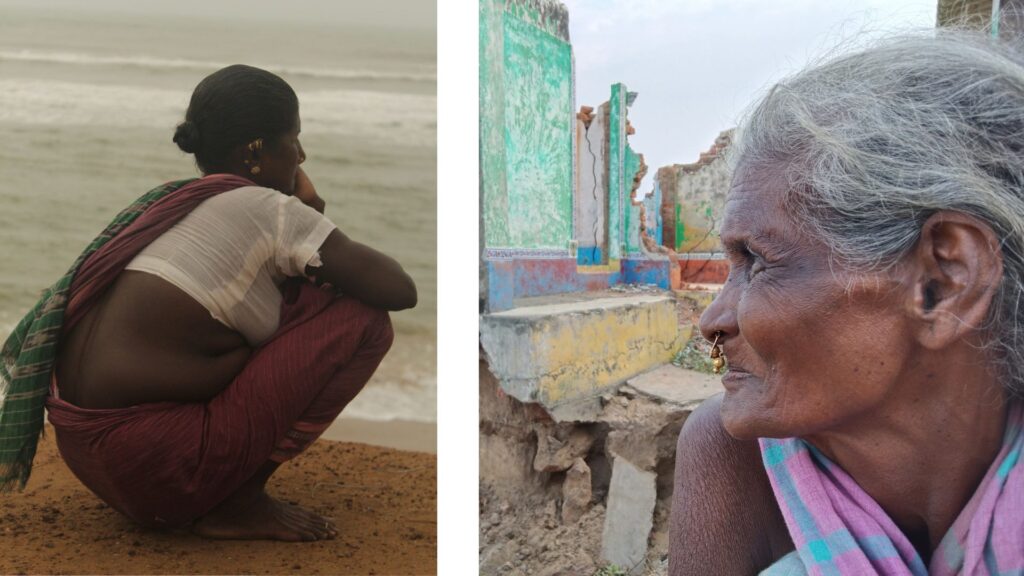
“We used to see the sea when we woke up, when we used to live in old Podampeta. Ever since the place was consumed by the sea, we have had to move. We do not see the sea in the morning, and I think of those days when we woke up to her.
“Even the fishermen, irrespective of whether they go fishing or not, want to go and see the ocean. There might be days when the catch is bad or good, but they go. Things have changed; there is no place to play. I keep worrying about not being able to see the sea. There is a belief that as long as we see the sea, nothing will happen to us.”
– Hadi, a resident of Ganjam
To contain her fury
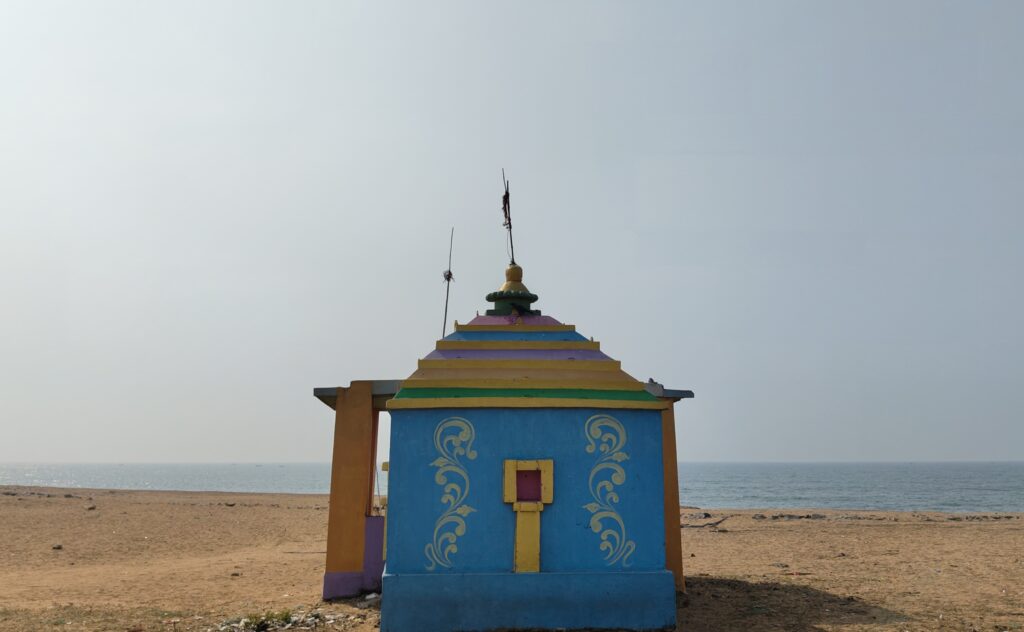
“Once, the Neelamma temple stood at a safe distance from the shore, a sacred space where the fishers gathered and prayed before they ventured into the sea. Their prayers are carried by the wind, their faith as deep as the ocean itself. We believe Neelamma contains anger, and her presence is a shield held against the fury of the sea.
“But the sea, restless and relentless in her mood, slowly swallowed the temple many years ago. The land beneath our prayers disappeared, as it did with the erosion. Our people refused to let their goddess be lost to the waves. We rebuilt her shrine—this time, standing at the edge of the waters, face-to-face with the ocean’s mood. Now Neelamma does not retreat. She stands guard, watching, listening with the fishers—calming the sea whenever it rises in anger.”
– Ramudu, an elderly fisherman
Searching the fading shores
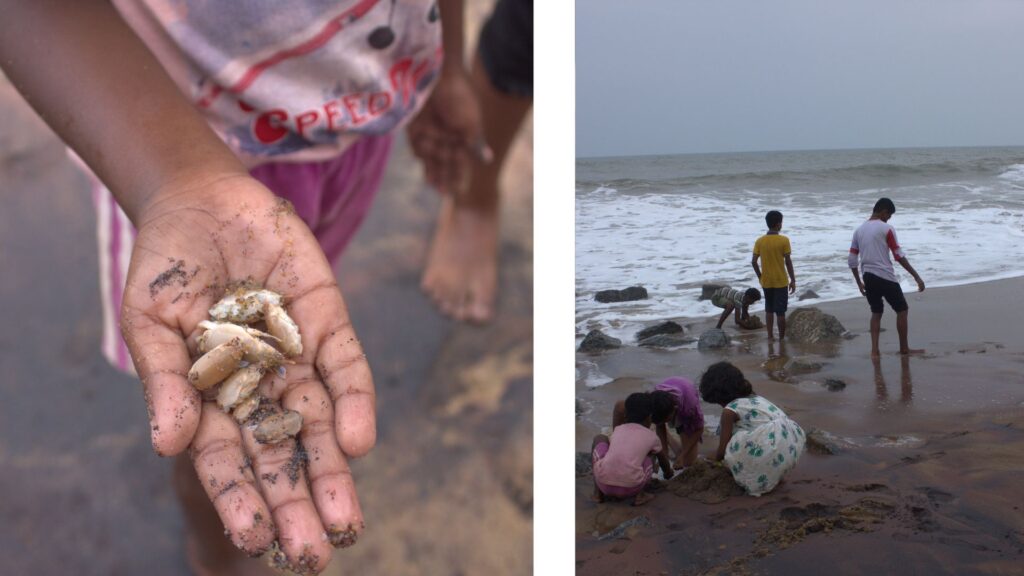
“There was a time when nalilu (mole crabs Emerita asiatica) were everywhere, scattered across the shore, slipping between waves. Children chased them with delight, their hands scooping them up. Fisherfolk used them for bait, and families cooked them into meals—they were abundant.
“But now, the nalilu are gone. The shoreline has shifted, the sea has changed, and with it, they are difficult to find. Very few of them dart between the waves. The loss is not just of nalilu, but of familiarity, of a way of life slipping away like the tide. Still, we search. Even if it takes longer, even if we find fewer.”
– Lokanatha, a young fisher, and Ganesh, a young coastal dweller
In the dunes
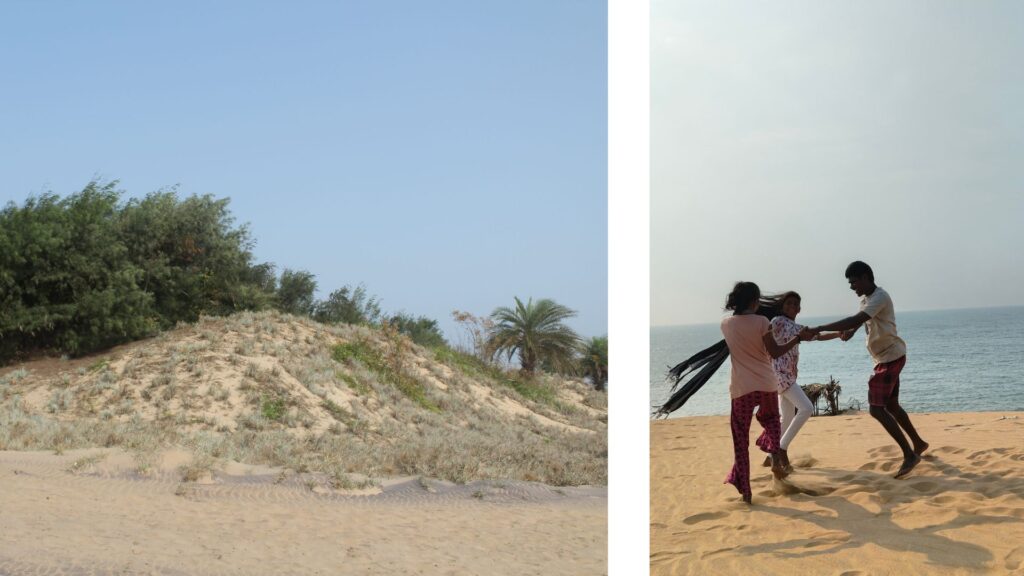
“The dunes were more than a playground in our childhood. They protected us from big cyclones and the eroding shores. We are alive today because some of them stood in the way of these changes. They held back the sea, slowed the erosion, and protected the land we call home. But now, look around—there is nothing left. The children still come to play, but the ground beneath them has changed. We ask for walls to be built and casuarina trees to be replanted to weather the storms.”
– Nachimi, a coastal dweller
Scorched in the heat
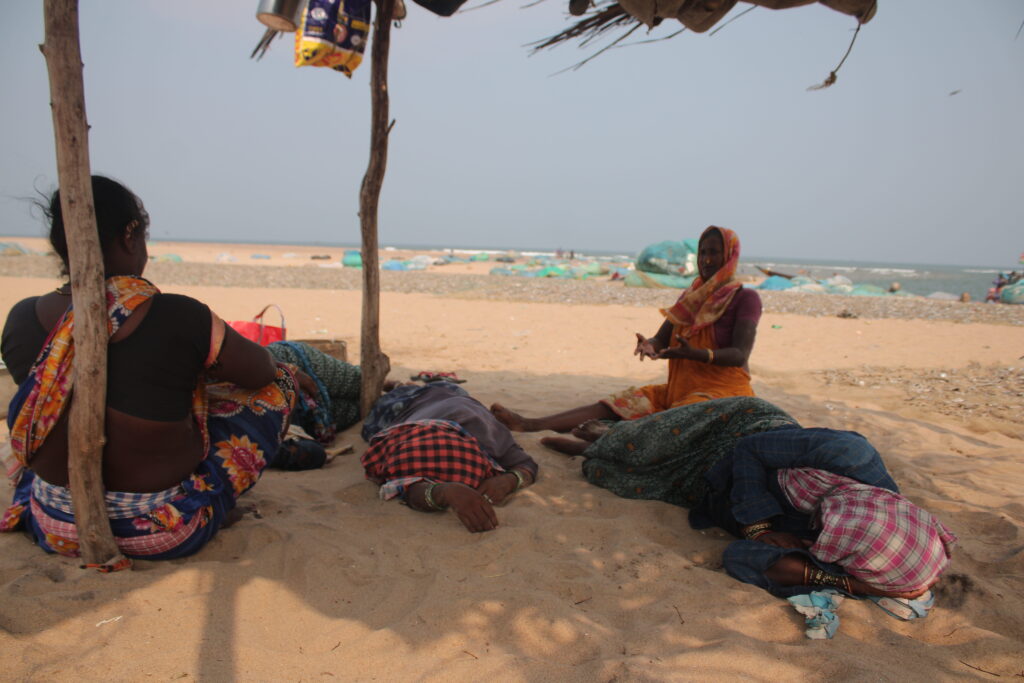
“During the summer months, it is not easy to be on the beach. Drying fish is not for a single person. We usually take turns with the buying, processing, and vending. We also take turns to rest. When one of us is sick, the profits are still shared with them. We don’t usually leave any women from the group—we share everything: profits, burdens, and work.”
– Mangamma, an old dry-fish processor
Holding on
The first time I (Pavitra) visited Arjipalli—another village in the Ganjam district—a young woman had died by suicide, and sorrow hung thick in the air. Many hushed stories were shared as the cause, but the intertwined truth was never to be found. The village felt heavy, the kind of quiet that follows grief settling into every corner.
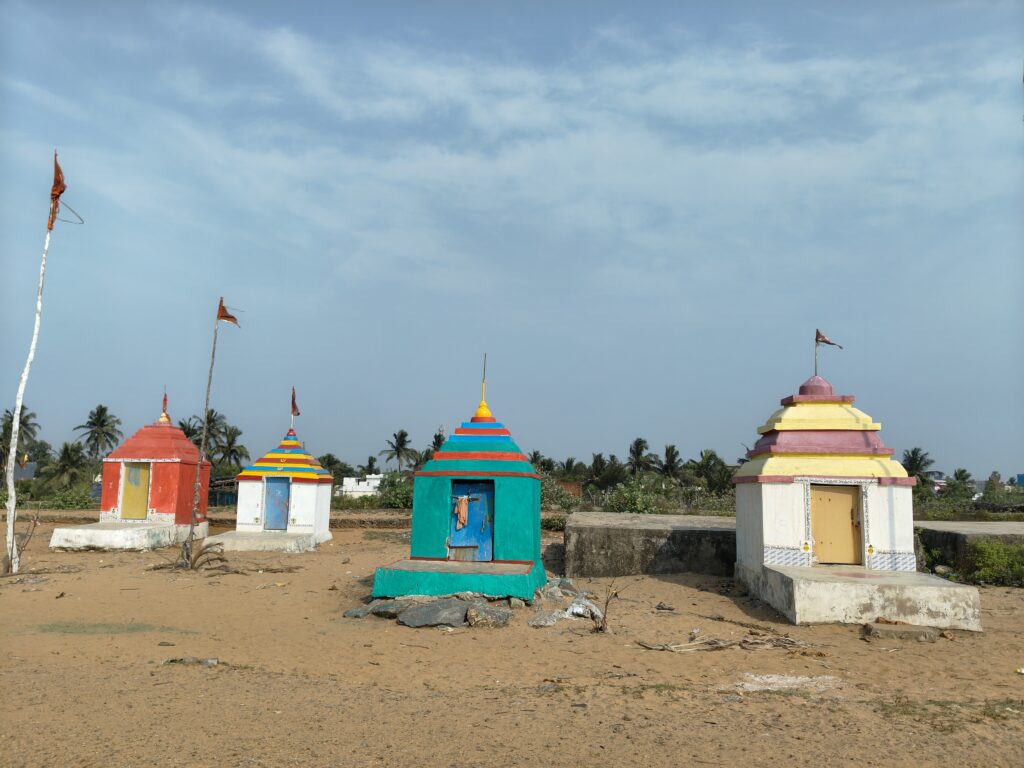
We walked to the edge of the road, where the dunes rose gently against the shoreline dotted with Purbapurasalu gudi (temples for the fisher-folks’ ancestors and family deities). I was told that before setting out to sea, the fishers come there, praying for safe passage and for their knowledge to stay sharp when the waters test them.
And in that oppressive air, we found a thread of belief—something to steady us for the daunting voyage ahead. At that moment, standing together in the face of invisible but deeply felt distress was enough. Enough to remind us we weren’t alone, enough to make space for grief, and enough to begin thinking of ways forward.

